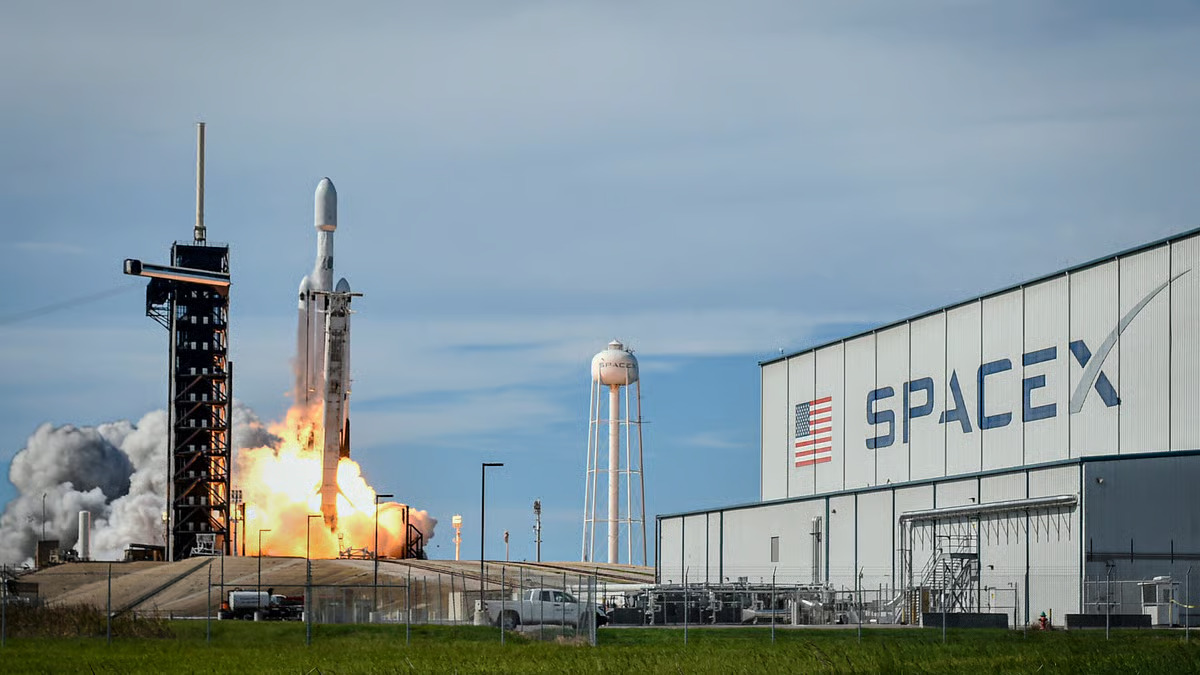KENNEDY SPACE CENTER, Fla. — August 1, 2025 — Against a backdrop of Florida’s unpredictable skies, SpaceX’s Falcon 9 rocket roared to life at 11:43 a.m. EDT today, successfully launching NASA’s Crew-11 mission to the International Space Station. This pivotal moment highlights a whirlwind 24 hours for Elon Musk’s space enterprise, blending human spaceflight triumph with relentless technological advancement.
Crew-11: Triumph After Delay
The four astronauts aboard SpaceX’s Crew Dragon “Endeavour” – NASA’s Zena Cardman (Commander) and Mike Fincke (Pilot), JAXA’s Kimiya Yui, and Roscosmos’ Oleg Platonov – began their journey following a 24-hour weather delay. Thick clouds and high winds scrubbed yesterday’s initial attempt, underscoring the razor-thin margins of crewed spaceflight.
- The Crew: Cardman, a geobiologist on her debut flight, was originally slated for 2024’s Crew-9 but yielded her seat to astronauts stranded by Boeing’s troubled Starliner. “Every astronaut wants to be in space… but it’s not about me,” she reflected pre-launch. Veteran Fincke (4th ISS mission) and Yui (2nd flight) bring experience, while Platonov triumphantly overcame past medical hurdles for his first spaceflight.
- The Journey: After a flawless ascent featuring Falcon 9’s signature stage separation and booster landing, Dragon is now en route to the ISS. Docking is set for ~3:00 a.m. EDT Saturday, August 2.
- Mission Goals: A six-month expedition focused on microgravity research—studying plant cell division, bacteriophages, stem cell production, and next-gen life support systems. NASA may extend this mission beyond six months as part of cost-saving measures.
- Historic Broadcast: In a space communications first, Netflix carried the launch live, bringing space exploration to unprecedented mainstream audiences.

Beyond Crew-11: SpaceX’s Multi-Front Push
While Crew-11 captured headlines, SpaceX’s other programs surged forward:
- Starship Gears Up for Flight 10: In South Texas, SpaceX conducted a critical single-engine static fire test of a Starship upper stage on July 31. Demonstrating an “in-space burn” capability, this test paves the way for Starship’s 10th integrated test flight, targeted for August [citation:Space.com article]. This comes after a June test stand explosion scrapped an earlier Ship.*Video Embed Suggestion: “SpaceX Starship Static Fire Test – July 31, 2025” (Show Raptor ignition and water deluge system)*
- Starlink Expansion Continues Unabated: Mere hours before scrubbing Crew-11 on July 31, SpaceX launched 19 more Starlink satellites from Vandenberg Space Force Base, California. This relentless deployment strengthens a constellation now exceeding 8,000 working satellites, driving global internet coverage.
- Dragon’s Rising Flight Limit: Crew-11 marks the sixth flight of the “Endeavour” capsule – exceeding NASA’s original 5-flight certification. The agency is actively working with SpaceX to extend this limit to 15 flights, reflecting growing confidence in Dragon’s reusability.
Cooperation in Orbit: A Global Handoff
Crew-11’s arrival triggers a carefully orchestrated transition aboard the ISS:
- A short handover period with the outgoing Crew-10 (NASA’s Anne McClain and Nichole Ayers, JAXA’s Takuya Onishi, and Roscosmos’ Kirill Peskov).
- Crew-10 will then return to Earth via Dragon for a splashdown off California, concluding their mission.
- The presence of Roscosmos Director General Dmitry Bakanov at the Crew-11 launch attempt highlights ongoing US-Russia space collaboration despite terrestrial tensions.
What’s Next for SpaceX?
- Crew-11 Docking (Aug 2): Watch the ISS rendezvous live via NASA+.
- Starship Flight 10 (August): The next leap in testing the Mars rocket.
- Extended ISS Stays: Potential 8-month Crew-11 mission testing SpaceX’s long-duration capabilities.
- Crew Dragon Recertification: Expanding fleet sustainability for ISS and beyond.
